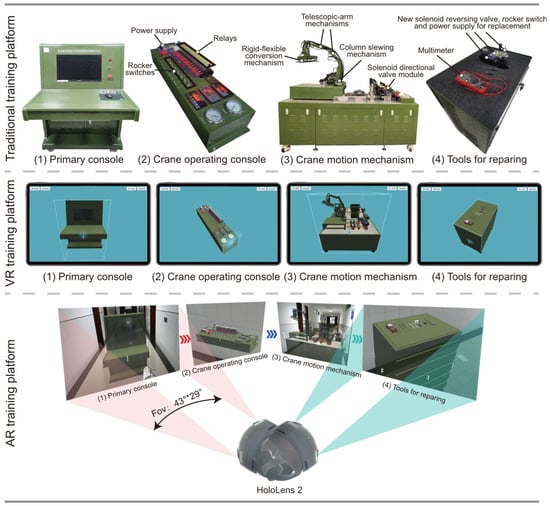
Sustainability, Vol. 14, Pages 14351: Research on Training Effectiveness of Professional Maintenance Personnel Based on Virtual Reality and Augmented Reality Technology
Sustainability, Vol. 14, Pages 14351: Research on Training Effectiveness of Professional Maintenance Personnel Based on Virtual Reality and Augmented Reality Technology
Sustainability doi: 10.3390/su142114351
Authors:
Xiao-Wei Liu
Cheng-Yu Li
Sina Dang
Wei Wang
Jue Qu
Tong Chen
Qing-Li Wang
The maintenance training method based on Virtual Reality (VR) and Augmented Reality (AR) technology has the characteristics of safety, no space limitation, and good reusability. Compared with the traditional training method, it can reduce the training cost, shorten the training period, and improve training effectiveness. Therefore, more and more maintenance training use VR and AR to replace training based on actual equipment to improve training effectiveness. However, in the context of multi-level tasks, there is still no clear research conclusion on how to choose training methods, maximize the advantages of each training method, and achieve higher training effectiveness. In response to this problem, this study constructed three training platforms based on VR, AR, and actual equipment, designed three maintenance tasks at different levels, and created a comparative analysis of the training effects of 60 male trainees under the three tasks and three training platforms. The results show that for single-level maintenance tasks, the training effect of the traditional group was significantly better than that of the AR group and the VR group. For multi-level maintenance tasks, the training effect of AR group was significantly better than that of the VR group. With the increasing difficulty of maintenance tasks, the training efficiency of the AR group was more than 10% higher than that of the VR group and traditional group and the AR group had less cognitive load. The conclusions of this study can provide a theoretical basis for the selection of training methods and evaluation design and help to formulate training strategies, thereby shortening the training period of professional maintenance personnel.
This content was originally published here.




